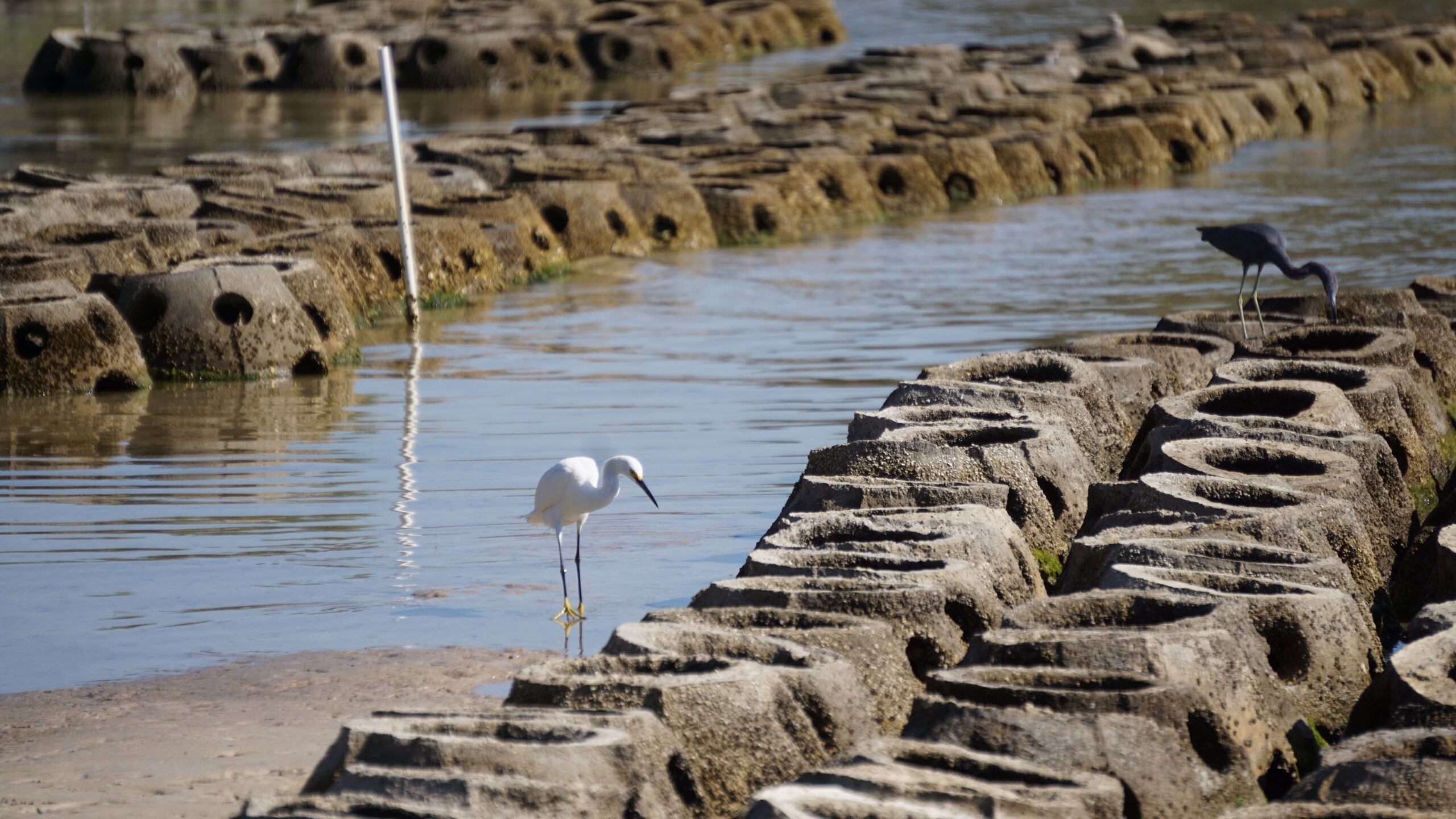
Carter Weinhofer

Carter Weinhofer
Just before 9 a.m. at the Tampa Bay Watch headquarters in Tierra Verde, Florida, the sun was visible, but its warmth was barely felt. The veteran volunteers, some having decades of history with the organization, began prepping for the other volunteers arriving in just a few minutes. The volunteers finished setting up the overhead tarp – protection from the sun that will be felt in just an hour. They talked with smiles on their faces, grabbed some water or a fresh baked muffin before it was time for everyone to sign in.
Under the tarp were about 30 large fiberglass molds. The molds, held together by strong metal pins, were filled with concrete and “spacers,” which included a large buoy in the center with small vinyl balls strategically placed around the sides. This morning’s group of volunteers was tasked with breaking open the molds and polishing off the finished oyster reef balls before pouring concrete back into the molds to make their own.
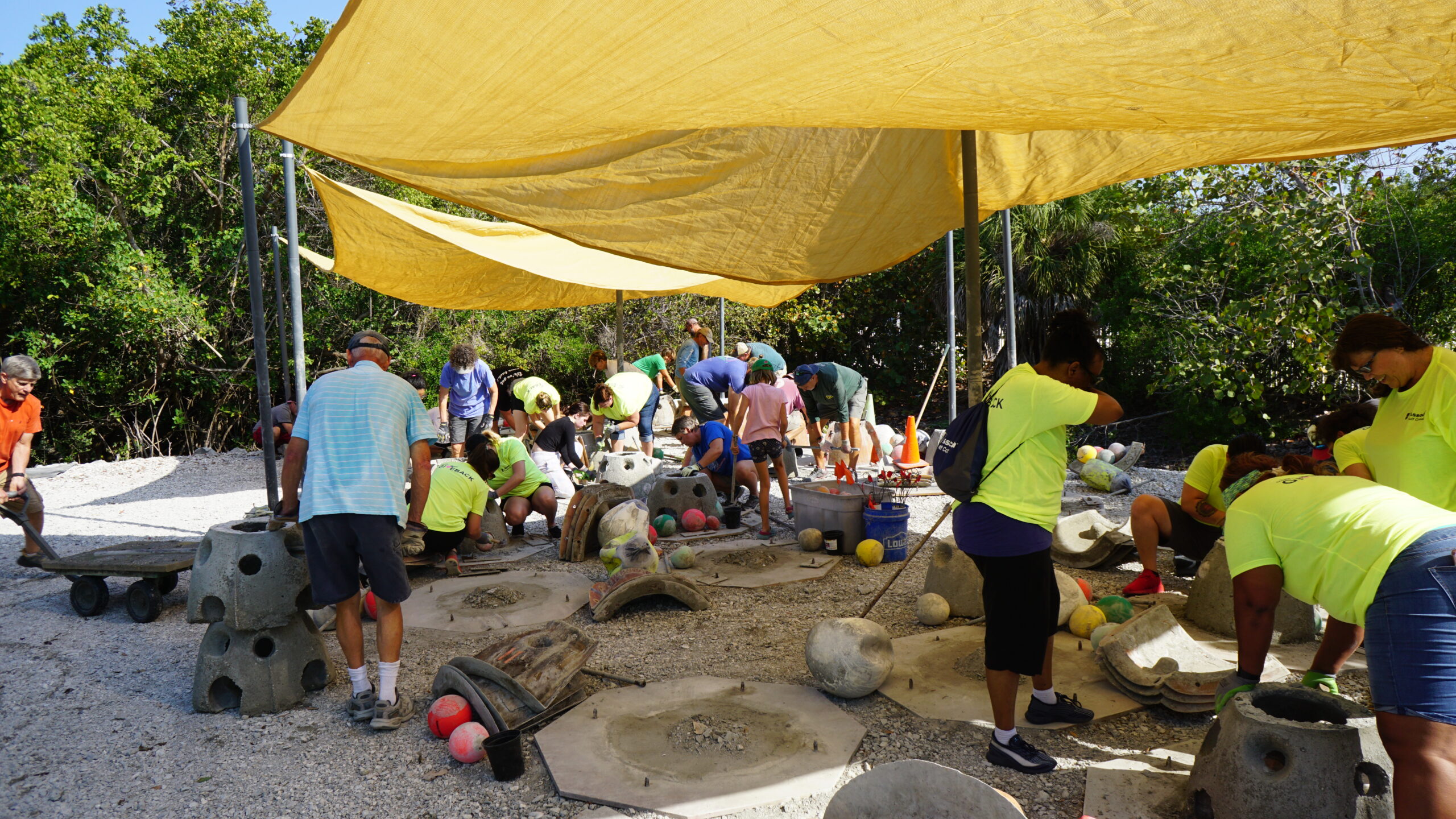
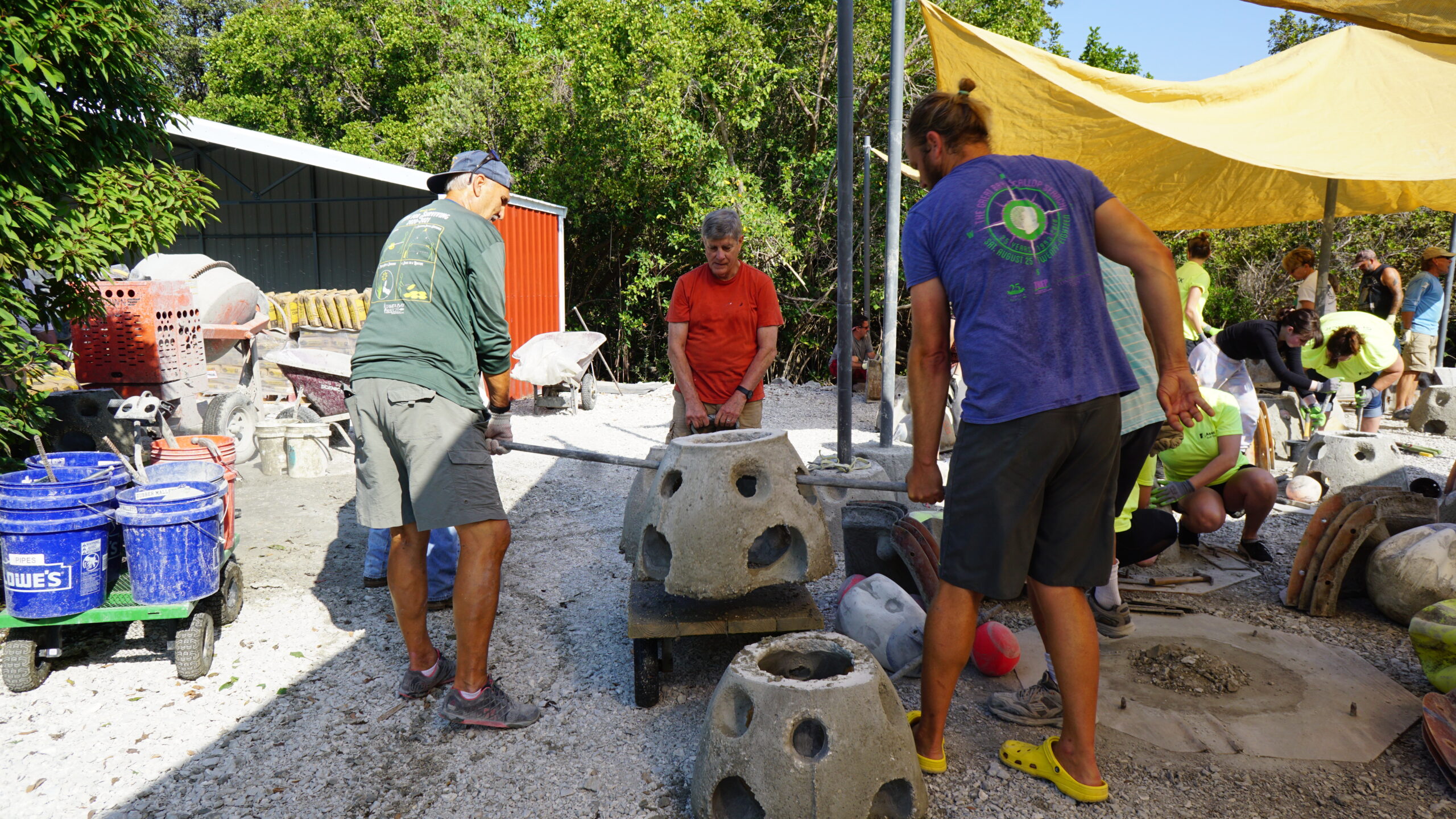
These oyster reef balls are a part of the living shorelines that Tampa Bay Watch creates throughout the Tampa Bay area. The holes created by the spaces in the concrete are designed to increase the change of species recruitment and allow water to flow through the concrete. Similar structures are used around the world to create artificial reef structures, in response to a global trend of declining coral reefs, according to Eric Plage, Environmental Specialist at Tampa Bay Watch. He has been with the non-profit organization since 2009, primarily working on the Oyster Reef Ball Program.
The ones made by Tampa Bay Watch are the “small ones,” according to Plage. Measuring 18 inches tall, 24 inches wide, these low-profile reef balls weigh between 150 and 200 pounds. Other oyster reef balls, such as “pallet balls,” can weigh up to 5000 pounds.
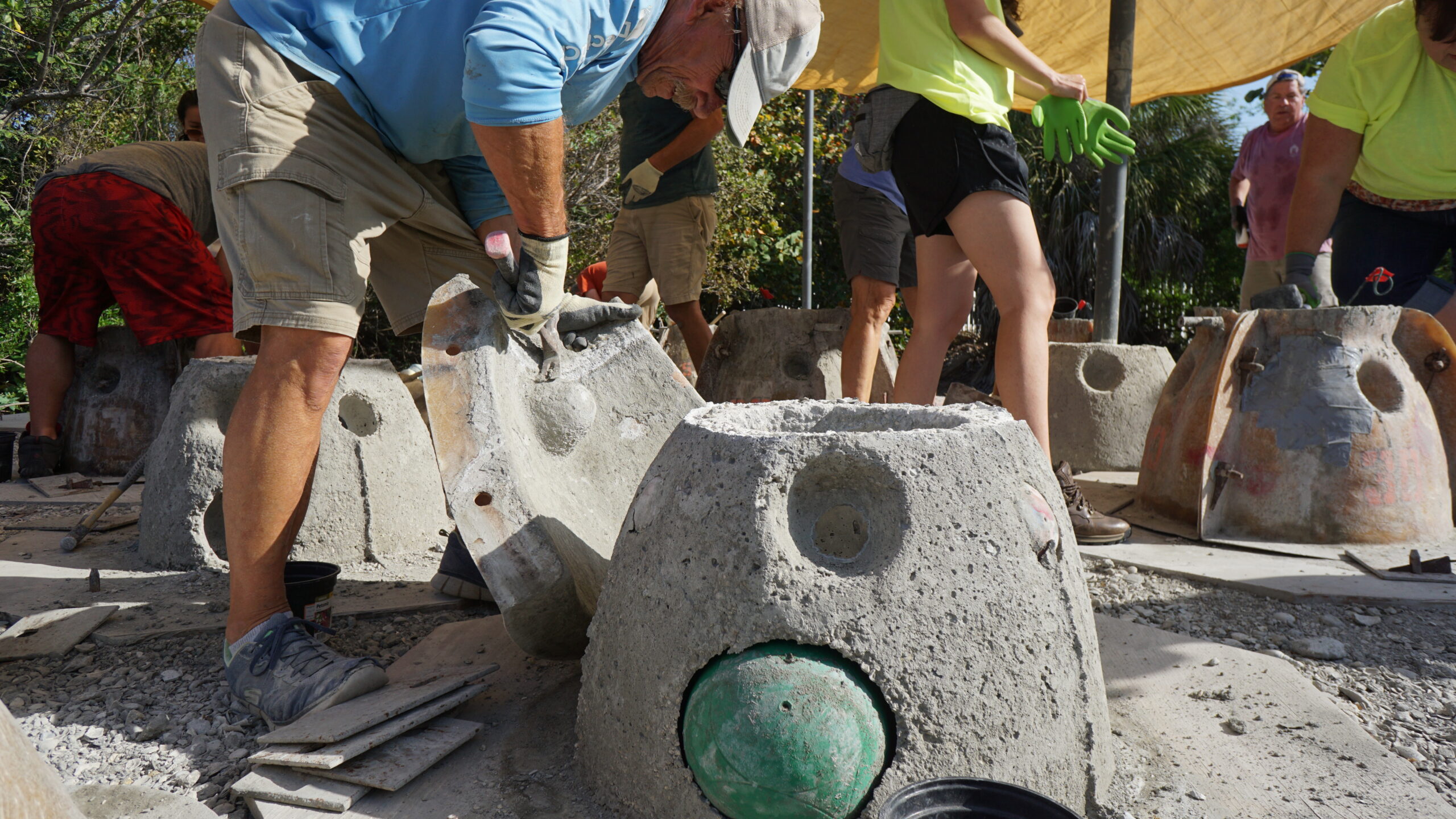
Tampa Bay Watch’s oyster reef balls are utilized in the intertidal zone. During low tide, they are completely exposed. At high tide, they rest in about two to three feet of water, according to Plage. Their purpose has three main components: shoreline stabilization, biological filtration and to create oyster communities.
In terms of shoreline stabilization, Plage listed daily energy from boat wakes and more extreme damage from storms as significant contributing stressors on Florida’s coastal environments. According to him, increased activity from boats going through channels can have some serious impact on the very important mangrove forests.
As more and more people use the waterways for recreational and commercial purposes, the stressing factors continue to expand. Increased wave activity and strength poses the risk of waves damaging the roots of mangroves and other vegetation. If serious enough, this can lead to the loss of mangrove forests, what Plage dubs as the “first line of defense.” With that defense gone, the erosion is free to continue landward and creep up to a person’s property.
To protect property, Plage says that many people decide to implement hardened shorelines in response to this erosion, mainly in the form of seawalls. But seawalls can do more damage than people think.
The Florida Fish and Wildlife Conservation Commission acknowledges the negative impacts of seawalls on their website. “Ironically, these structures often increase the rate of coastal erosion, remove the ability of the shoreline to carry out natural processes, and provide little habitat for estuarine species,” the site says.
Most of Tampa Bay consists of sloped shorelines that consist of many different habitats: high marsh, low marsh, high tide line, intertidal zone and low tide line. Building a flat, hardened shoreline takes away that sloped shoreline and therefore contributes to the erasure of the many different habitats possible.
But these hardened shorelines also worsen the very problem of erosion that they are meant to address, as they magnify the impacts of boat wakes and storms. Ocean waves come in the form of energy, so as a wave approaches the shoreline, the energy needs to go somewhere. With a sloped shoreline, it can be gradually dissipated through multiple layers, having a less profound effect. But with hardened sea walls, the energy simply reflects back and causes more destruction, according to Plage.
To oppose the hardened shoreline strategy, organizations like Tampa Bay Watch use more sloped, living shorelines that are not only more natural but also mitigate effects more sensibly. Their living shorelines include three main habitats that they create.
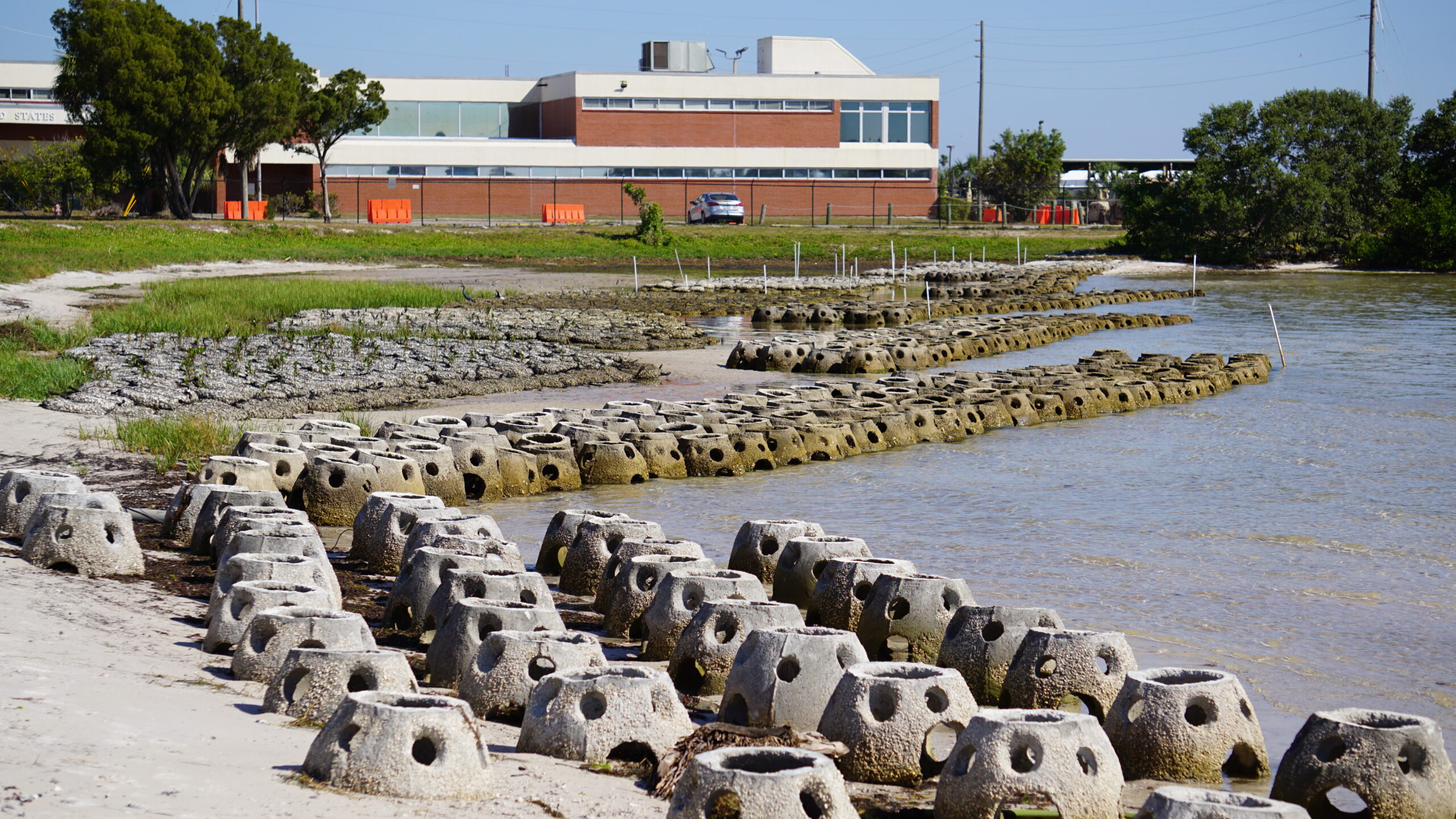
First are the oyster reef balls themselves, which Plage calls the first line of defense. They are placed in the intertidal zone side-by-side. Behind the oyster reef balls a lagoon forms, in which oyster shell bags are placed in order to hold in sediment and recruit organisms. Behind all this, closest to shore, is salt marsh grass. Every part of this shoreline is important in its own way.
“Oyster communities are incredibly important because they’re incredibly biodiverse,” Plage said. “Within the little nooks and crannies of those oyster balls, there are tons of different invertebrates that use that as a nursery, use that as a safe haven.”
The oysters that are recruited onto the reef balls are impressive in themselves. Not only do they add to the diversity of the communities and promote other species’ recruitment, but they also filter water.
A single adult oyster can filter one to two gallons of water per hour when fully submerged. That’s up to 50 gallons a day, according to the National Oceanic and Atmospheric Administration – another missing component of sea walls.
Every part of the shoreline projects takes a lot of manpower. Everything from creating the oyster reef balls to growing the salt marsh grasses. The latter is done through another program called Bay Grasses in Classes, which works with local classrooms to grow the salt marsh grasses and see them planted in future shoreline projects.
“We’re a hearty crew of just a handful of people, but we couldn’t do anything without our community volunteers,” Plage said.
Plage said that with about 40 volunteers, they can install 200-300 reef balls in a single day.
Margie Sundstrom has been volunteering with Tampa Bay Watch for a decade now, mainly with the oyster reef ball program. Her favorite aspect is showing the community how the organization is really impacting the shorelines in the Tampa Bay Area.
“The one thing that I like about it is how the community gets involved,” Sundstrom said. “Because they see what we’re doing and have an understanding of what’s being done and they can do it too.”
As an environmental non-profit, Tampa Bay Watch gets a hands-on look at projects like these from start to finish. When they see a shoreline that is in danger or in need, they can take data themselves, use it to inform a restoration plan, create a design, acquire permits for the design and follow through with the help of community volunteers.
“I think the coolest part of my job is to see one of these living shorelines come to a complete fruition,” Plage said. “Through many of the shorelines I’ve worked on, I’ve seen them from the beginning to where they are now where they’re prospering shorelines.”